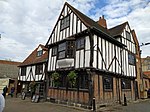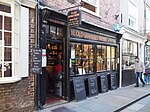Cooperative Institute for Marine and Atmospheric Studies
The Cooperative Institute for Marine and Atmospheric Studies (CIMAS) is a research institute of the University of Miami located in its Rosenstiel School of Marine, Atmospheric, and Earth Science (RSMAS) in Miami, Florida. CIMAS brings together the University of Miami's Rosenstiel School of Marine, Atmospheric, and Earth Science and other partner universities with those of the NOAAA to develop a Center of Excellence that is relevant to understanding the Earth's oceans and atmosphere within the context of NOAA's mission. In 2010. CIMAS was restructured in light of its successful submission to a competitive award program to keep pace with changes in scientific and societal priorities and changes in both NOAA and the University of Miami's research priorities. CIMAS is one of sixteen NOAA Cooperative Institutes (CIs). The nine partner universities include: Florida Atlantic University (FAU) Florida International University (FIU) Florida State University (FSU) Nova Southeastern University (Nova) University of Florida (UF) University of Miami (UM) University of Puerto Rico at Mayagüez (UPRM) University of South Florida (USF) University of Virgin Islands (USVI) CIMAS research themes include: Climate research and impacts Tropical Weather Sustained Ocean and Coastal Observation Ocean Modeling Ecosystem Modeling and Forecasting Ecosystem Management Protection and Restoration of Resources
Excerpt from the Wikipedia article Cooperative Institute for Marine and Atmospheric Studies (License: CC BY-SA 3.0, Authors).Cooperative Institute for Marine and Atmospheric Studies
Parliament Street, York Bishophill
Geographical coordinates (GPS) Address Nearby Places Show on map
Geographical coordinates (GPS)
| Latitude | Longitude |
|---|---|
| N 53.9593817 ° | E -1.0814175 ° |
Address
TUI
Parliament Street 31
YO1 8RS York, Bishophill
England, United Kingdom
Open on Google Maps









